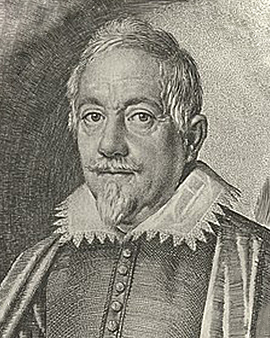


In the late 16th century, when the Renaissance was at its height in Italy, a young artist from Florence began to leave his mark on art history. Antonio Tempesta, born around 1555, was a man whose diverse talents and visionary work significantly influenced the evolution of art from Mannerism to the early Baroque. A pupil of Jan van der Straet, also known as Stradanus, Tempesta probably collaborated on the decoration of the Palazzo Vecchio and parts of the corridor of the Uffizi before deciding to unleash most of his creative energy in Rome. Through his captivating compositions and unique sense of aesthetic clarity and narrative consistency, he helped shape the transition from the extravagant forms of Mannerism to the dramatic clarity of the early Baroque.
Around 1580, Tempesta moved to Rome and began to pursue printmaking. His work includes not only paintings, drawings, and etchings, but also fine art prints that we are proud to reproduce today in the highest quality. Tempesta was known for his incredible productivity and created about 1700 etchings, depicting biblical as well as historical and mythological subjects. He developed a remarkable variety of subjects, including famous battle scenes, depictions of animals, and even a cycle of horse depictions inspired by works by his teacher Stradanus. Tempesta also demonstrated his innovative spirit in printmaking by having many of his etchings, including the 150 scenes from Ovid's Metamorphoses, printed and published in Antwerp rather than Rome.
Later in his life, Tempesta turned to a particularly fascinating art form: painting on stone. He produced a large number of paintings on marble, alabaster, and lapis lazuli that immediately became part of the collections of Roman nobility and were sought after internationally. Among his pupils was the Lorraine artist Claude Deruet, who probably learned etching from Tempesta. To this day, Antonio Tempesta's works remain an inspiration to artists and art lovers worldwide, and his inventions were significant sources of inspiration for artists of the 17th and 18th centuries. Our high-quality art prints are also designed to carry on the artistic spirit of Antonio Tempesta and honor his incomparable contribution to art history. We are proud to preserve and celebrate the rich legacy of this extraordinary artist through our reproductions.

In the late 16th century, when the Renaissance was at its height in Italy, a young artist from Florence began to leave his mark on art history. Antonio Tempesta, born around 1555, was a man whose diverse talents and visionary work significantly influenced the evolution of art from Mannerism to the early Baroque. A pupil of Jan van der Straet, also known as Stradanus, Tempesta probably collaborated on the decoration of the Palazzo Vecchio and parts of the corridor of the Uffizi before deciding to unleash most of his creative energy in Rome. Through his captivating compositions and unique sense of aesthetic clarity and narrative consistency, he helped shape the transition from the extravagant forms of Mannerism to the dramatic clarity of the early Baroque.
Around 1580, Tempesta moved to Rome and began to pursue printmaking. His work includes not only paintings, drawings, and etchings, but also fine art prints that we are proud to reproduce today in the highest quality. Tempesta was known for his incredible productivity and created about 1700 etchings, depicting biblical as well as historical and mythological subjects. He developed a remarkable variety of subjects, including famous battle scenes, depictions of animals, and even a cycle of horse depictions inspired by works by his teacher Stradanus. Tempesta also demonstrated his innovative spirit in printmaking by having many of his etchings, including the 150 scenes from Ovid's Metamorphoses, printed and published in Antwerp rather than Rome.
Later in his life, Tempesta turned to a particularly fascinating art form: painting on stone. He produced a large number of paintings on marble, alabaster, and lapis lazuli that immediately became part of the collections of Roman nobility and were sought after internationally. Among his pupils was the Lorraine artist Claude Deruet, who probably learned etching from Tempesta. To this day, Antonio Tempesta's works remain an inspiration to artists and art lovers worldwide, and his inventions were significant sources of inspiration for artists of the 17th and 18th centuries. Our high-quality art prints are also designed to carry on the artistic spirit of Antonio Tempesta and honor his incomparable contribution to art history. We are proud to preserve and celebrate the rich legacy of this extraordinary artist through our reproductions.
Page 1 / 6






